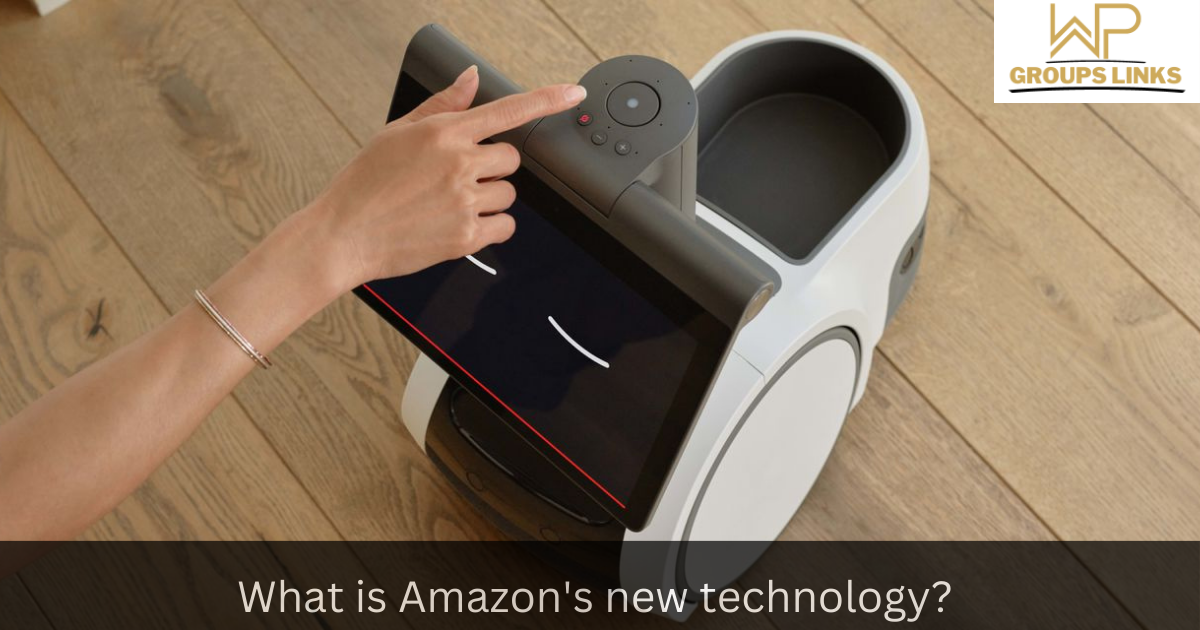Amazon’s New Technology
In recent years, Amazon has emerged as a global powerhouse, not only as an e-commerce giant but also as a trailblazer in the field of technology. Continuously pushing boundaries and exploring new frontiers, Amazon has introduced a plethora of groundbreaking technologies that are shaping the future. This article delves into some of Amazon’s latest technological advancements that are revolutionizing industries and transforming the way we live, work, and interact with the world.
Artificial Intelligence (AI) and Machine Learning (ML):
Underpinning many of Amazon’s innovative solutions is the power of artificial intelligence and machine learning. Through its vast cloud computing infrastructure known as Amazon Web Services (AWS), Amazon has made significant strides in AI and ML technologies. From Alexa, its voice-activated virtual assistant, to Amazon Rekognition, an advanced image and video analysis tool, AI and ML have become integral parts of Amazon’s ecosystem.
Robotics and Automation: Amazon has been at the forefront of robotics and automation, particularly in its vast network of fulfillment centers. The company has deployed an army of robots to streamline its operations, optimizing order picking, packing, and shipping processes. Amazon’s robots work alongside human employees, enhancing efficiency and reducing fulfillment times. Additionally, the company has also ventured into autonomous delivery drones, aiming to revolutionize last-mile logistics.
Internet of Things (IoT):
Embracing the concept of a connected world, Amazon has made significant advancements in the realm of the Internet of Things. One notable example is the Amazon Dash Replenishment Service, which enables smart devices to automatically reorder supplies. For instance, printers equipped with Dash Replenishment can automatically order ink when it runs low. By seamlessly integrating physical devices and online services, Amazon is simplifying consumers’ lives and creating a more efficient ecosystem.
Voice and Natural Language Processing: Amazon’s voice recognition and natural language processing technologies have revolutionized how we interact with devices. The introduction of Amazon Echo and its voice-activated assistant, Alexa, marked a significant milestone. Users can now perform a wide range of tasks simply by issuing voice commands, from playing music to controlling smart home devices. With continued advancements in voice recognition, Amazon is making strides toward more seamless and intuitive human-machine interactions.
Cloud Computing and Infrastructure:
Amazon Web Services (AWS), the cloud computing arm of Amazon, has played a pivotal role in the company’s success. AWS provides a range of services and tools that enable businesses of all sizes to harness the power of the cloud. From scalable storage solutions to advanced data analytics and machine learning capabilities, AWS empowers organizations to innovate and scale rapidly. This technology has transformed the way businesses operate and has fueled the growth of numerous startups and enterprises.
Augmented Reality (AR) and Virtual Reality (VR): Recognizing the immense potential of AR and VR, Amazon has made strides in these immersive technologies. Amazon Sumerian, a platform for creating AR, VR, and 3D experiences, allows developers to build interactive applications without requiring extensive coding knowledge. Furthermore, Amazon has also explored the integration of AR into its shopping experience, enabling customers to visualize products in their homes before making a purchase. By leveraging AR and VR, Amazon aims to enhance customer engagement and create more immersive experiences.
Autonomous Vehicles and Delivery Systems:
Autonomous vehicles and delivery systems represent a significant area of focus for Amazon as it seeks to revolutionize logistics and redefine the delivery experience. The company recognizes the potential of autonomous technology to enhance efficiency, reduce costs, and provide faster, more reliable delivery services.
Self-Driving Vehicles:
Amazon has been actively investing in self-driving vehicle technology to streamline its delivery operations. The company aims to reduce reliance on traditional delivery methods, such as human drivers, and leverage autonomous vehicles to optimize routes, improve safety, and increase the speed of deliveries. By eliminating the need for human intervention, self-driving vehicles have the potential to operate 24/7, resulting in a significant boost in delivery capacity.
Drone Delivery: One of Amazon’s most ambitious projects is the development of delivery drones. With its Prime Air program, the company aims to create a fleet of autonomous drones capable of delivering packages to customers within 30 minutes or less. These drones utilize advanced computer vision, machine learning, and sensor technology to navigate obstacles, identify safe landing spots, and execute precision deliveries. While regulatory hurdles and safety concerns still need to be addressed, Amazon has made significant progress in testing and refining its drone delivery capabilities.
Sidewalk Delivery Robots:
In addition to aerial drones, Amazon has also explored ground-based delivery robots designed to operate on sidewalks and pedestrian pathways. These robots are equipped with advanced sensors, cameras, and AI algorithms that enable them to navigate busy urban environments safely. They can autonomously detect and avoid obstacles, plan efficient routes, and deliver packages directly to customers’ doorsteps. Amazon envisions deploying these robots in densely populated areas to handle last-mile deliveries, improving convenience and reducing congestion on roadways.
Integration with Smart Home Technology: Amazon aims to seamlessly integrate its autonomous delivery systems with smart home technology to provide a truly frictionless experience for customers. For instance, when a delivery drone or robot arrives at a customer’s residence, it can interact with smart locks or access codes to gain entry and leave the package securely. This integration eliminates the need for customers to be physically present to receive deliveries and ensures the safety of packages.
Safety and Regulatory Considerations:
As with any emerging technology, safety and regulatory considerations are paramount. Amazon is actively collaborating with regulatory bodies, industry experts, and policymakers to develop guidelines and standards for the safe operation of autonomous vehicles and delivery systems. The company is committed to addressing concerns related to privacy, airspace management, noise pollution, and public safety to ensure the responsible and widespread adoption of autonomous delivery technologies.
Environmental Benefits: Beyond the operational advantages, autonomous delivery systems have the potential to significantly reduce the environmental impact of traditional delivery methods. By optimizing routes, minimizing idle time, and reducing the number of vehicles on the road, autonomous vehicles can contribute to lower carbon emissions and improved air quality. Additionally, the use of electric-powered drones and robots further enhances the sustainability aspect of Amazon’s delivery infrastructure.



